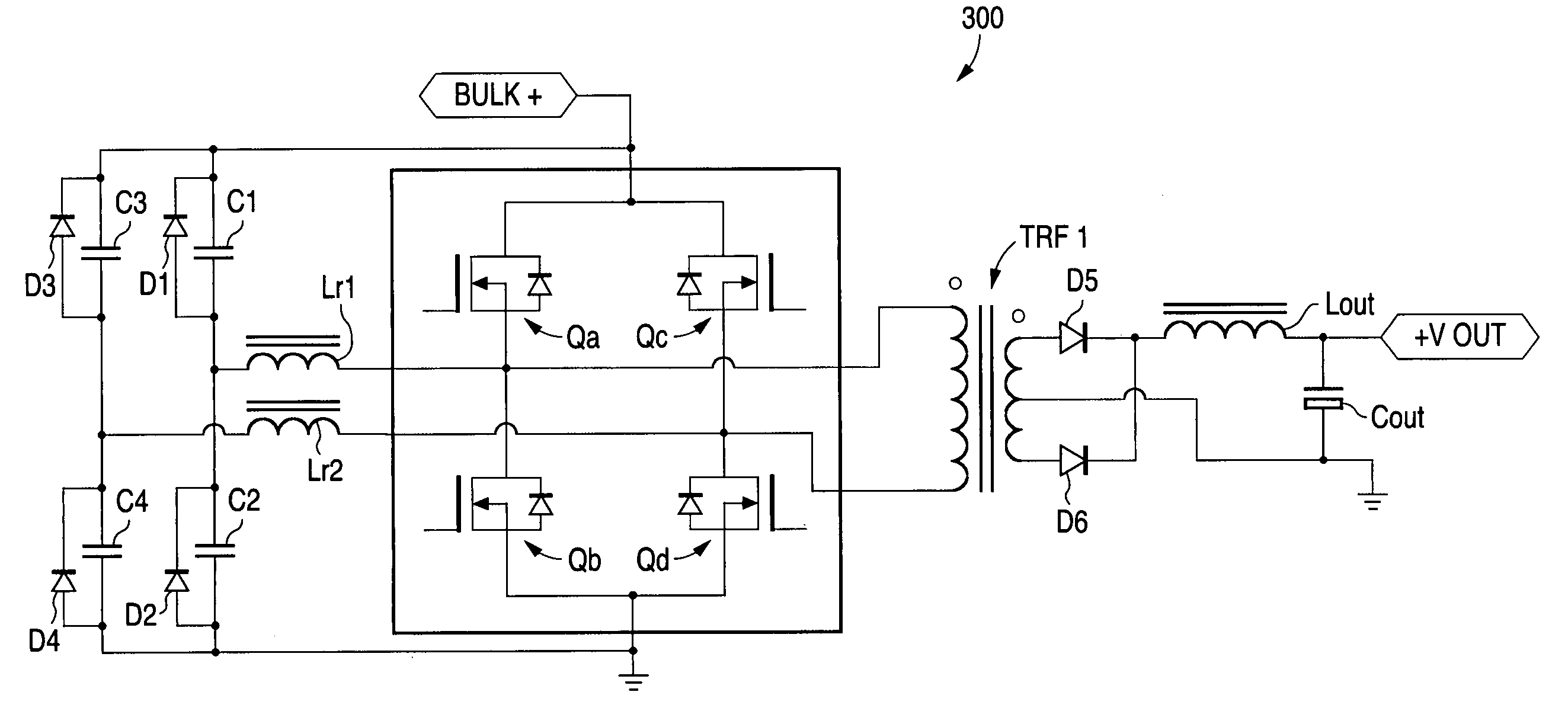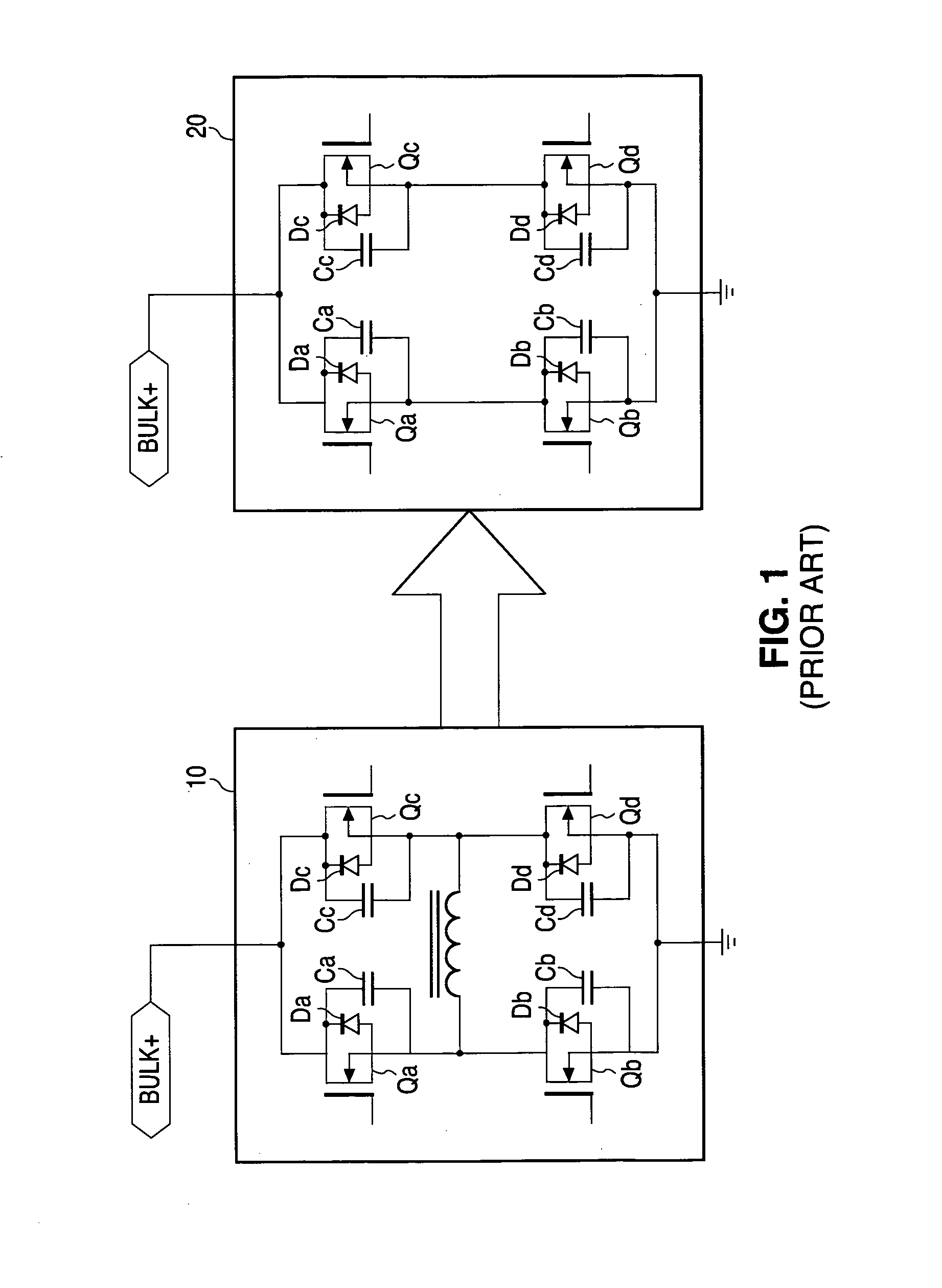Soft switched zero voltage transition full bridge converter
a converter and zero-voltage technology, applied in the direction of electric variable regulation, process and machine control, instruments, etc., can solve the problems of increasing unabated, higher switching loss, and worse electromagnetic interference (emi), and achieves low emi, increased operating frequency, and higher density packaging
- Summary
- Abstract
- Description
- Claims
- Application Information
AI Technical Summary
Benefits of technology
Problems solved by technology
Method used
Image
Examples
Embodiment Construction
[0040]In the prior art converter shown in FIG. 4, the capacitor divider C11 and C21 is expected to deliver a constant voltage bias for the ZVS inductors throughout the operational period. This may require a higher value of capacitance for these capacitors. This requirement may also increase demands on each ZVS inductor since each must withstand this voltage bias without saturating. The present invention reduces the demands on these components. The present invention will now be described in more detail with reference to FIGS. 5–9.
[0041]FIG. 5 is a circuit diagram of a power converter 100 to illustrate a basic concept of the present invention. In FIG. 5, four inductors, Lr1, Lr2, Lr3, and Lr4, are used, each with corresponding diodes and four voltage sources identified as VB1, VB2, VB3, and VB4. These voltage sources are much lower in voltage as compared to the prior art circuit of FIG. 4, and allow appropriate trimming of the inductors by varying the voltage levels. The circuit shown...
PUM
 Login to View More
Login to View More Abstract
Description
Claims
Application Information
 Login to View More
Login to View More - R&D
- Intellectual Property
- Life Sciences
- Materials
- Tech Scout
- Unparalleled Data Quality
- Higher Quality Content
- 60% Fewer Hallucinations
Browse by: Latest US Patents, China's latest patents, Technical Efficacy Thesaurus, Application Domain, Technology Topic, Popular Technical Reports.
© 2025 PatSnap. All rights reserved.Legal|Privacy policy|Modern Slavery Act Transparency Statement|Sitemap|About US| Contact US: help@patsnap.com



